What I Wish I’d Known About Marathon Calorie Burn

I used to obsess over those online calorie calculators before marathons. You know the ones – punch in your weight, get a number, plan your fueling strategy around it. Then I’d bonk at mile 20 anyway, wondering what went wrong. Did you know that a 10K run could torch up to 800 calories? But when it comes to the full 26.2-mile distance, those calculators are missing some pretty important pieces of the puzzle.
Table of Contents
- How Your Body Actually Burns Energy (Spoiler: It’s Not Just About Weight)
- The Food Connection Nobody Talks About
- Why Timing Your Runs Changed Everything for Me
- What Happens After You Cross That Finish Line
- Final Thoughts
TL;DR
- How your body burns energy is way more personal than any calculator can predict – your breathing patterns actually tell you whether you’re burning carbs or fat
- Your muscle fiber makeup (yes, you can test for this) explains why some people are natural marathon machines while others struggle
- Weather can mess with your energy burn by 25%, but proper altitude training actually makes you more efficient
- The quality of food you eat before training affects how well your body uses energy during the actual race
- Your body clock creates huge swings in how efficiently you burn energy – I learned this one the hard way
- You keep burning extra calories for 48 hours after finishing, and it can equal 25% of what you burned during the race
How Your Body Actually Burns Energy (Spoiler: It’s Not Just About Weight)
I’ve been running marathons for over a decade, and I can tell you that those online calorie calculators are basically useless. They’ll tell you that a 150-pound runner burns roughly 2,600 calories during a marathon, but I’ve seen runners of identical weight burn anywhere from 2,200 to 3,400 calories in the same race. The difference? How their unique body actually works.
Every runner burns calories differently based on way more than just stepping on a scale. Understanding how your personal energy system works through breathing patterns, muscle makeup, and environmental factors can completely change your fueling strategy and performance. The cool thing is that technology now lets us track these things in real-time, helping you find your sweet spot and adjust your race plan accordingly.
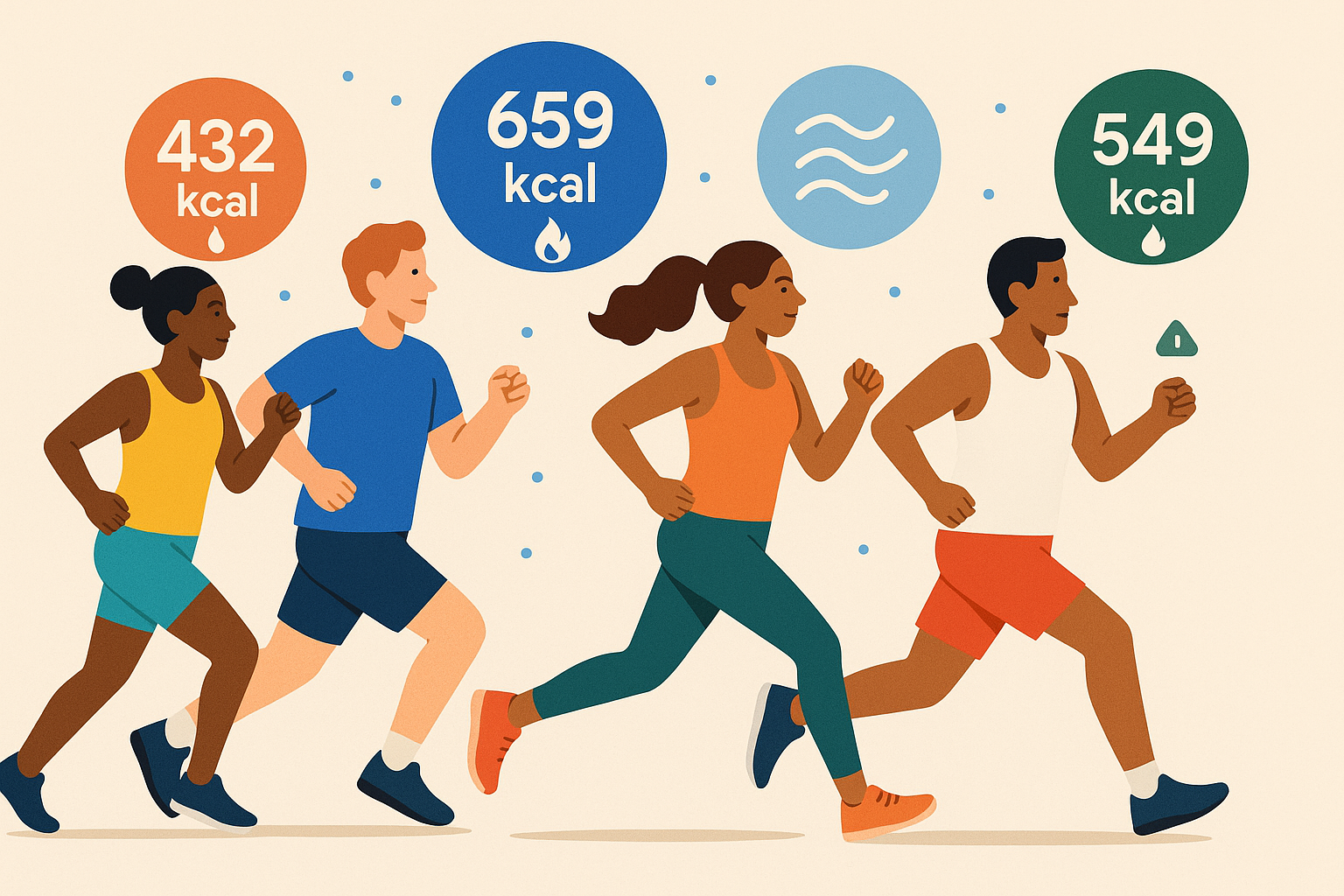
The Simple Breathing Trick That Changed My Running
Here’s something that blew my mind when I first learned it: your breathing during a marathon tells you exactly what fuel your body is using, and this completely affects how many calories you burn and whether you’ll crash later. Modern wearables can actually track this stuff now, showing you the exact moment your body switches fuel sources and helping you stay in that efficient zone throughout your race.
When I first heard about something called “respiratory exchange ratios,” it sounded way too complicated. But it’s actually pretty simple – your breathing tells a story about what fuel your body is using right now. A ratio of 0.7 means you’re burning pure fat, while 1.0 means you’re running on carbs alone. Most runners spend their entire marathon hovering around 0.85-0.9, which means they’re missing out on some serious fat-burning potential.
Real-Time Tracking That Actually Works
Advanced wearable devices can now monitor your respiratory exchange ratio during runs, giving you instant feedback about what’s happening inside your body. This technology helps you figure out when you’re burning fat versus carbs, so you can adjust your pace to stay in that efficient zone and avoid running out of gas early.
Understanding how many calories do you burn in a marathon becomes way more accurate when you consider the insights that cold showers health benefits can provide for boosting your recovery and making your body more flexible with fuel between training sessions.
According to Your Austin Marathon, running burns between 100-120 calories per mile, but this general rule varies big time based on individual factors that wearable technology can now track in real-time.
| Running Pace | MET Value | Calories/Hour (155lb runner) |
|---|---|---|
| Light jogging (5.0 mph) | 6 METs | 600 calories |
| Running (6.0 mph) | 8 METs | 700 calories |
| Running (7.0 mph) | 10 METs | 850 calories |
| Running (8.0 mph) | 11.5 METs | 980 calories |
| Running (9.0 mph) | 12.8 METs | 1,088 calories |
Finding Your Sweet Spot (Most Runners Get This Wrong)
Most marathoners unknowingly run too fast to stay in that efficient fat-burning zone, which means they burn through their carb stores too quickly and need way more fuel during the race. Finding that magical crossover point through testing lets you pace yourself to burn mostly fat, dramatically improving your energy efficiency during long races.
Here’s where it gets really interesting: A 150-pound runner staying in their fat-burning sweet spot at 7:30 pace might burn 85% fat and 15% carbs, needing way less mid-race fueling compared to the same runner at 6:30 pace burning 40% fat and 60% carbs. I learned this the hard way during my third marathon when I went out too fast and completely crashed at mile 20.
The key is finding that magical pace where you can still hold a conversation but feel like you’re working. For most runners, this happens at about 65-75% of their max heart rate. Once you cross that line, your body starts demanding more carbs, and your calorie burn goes through the roof.
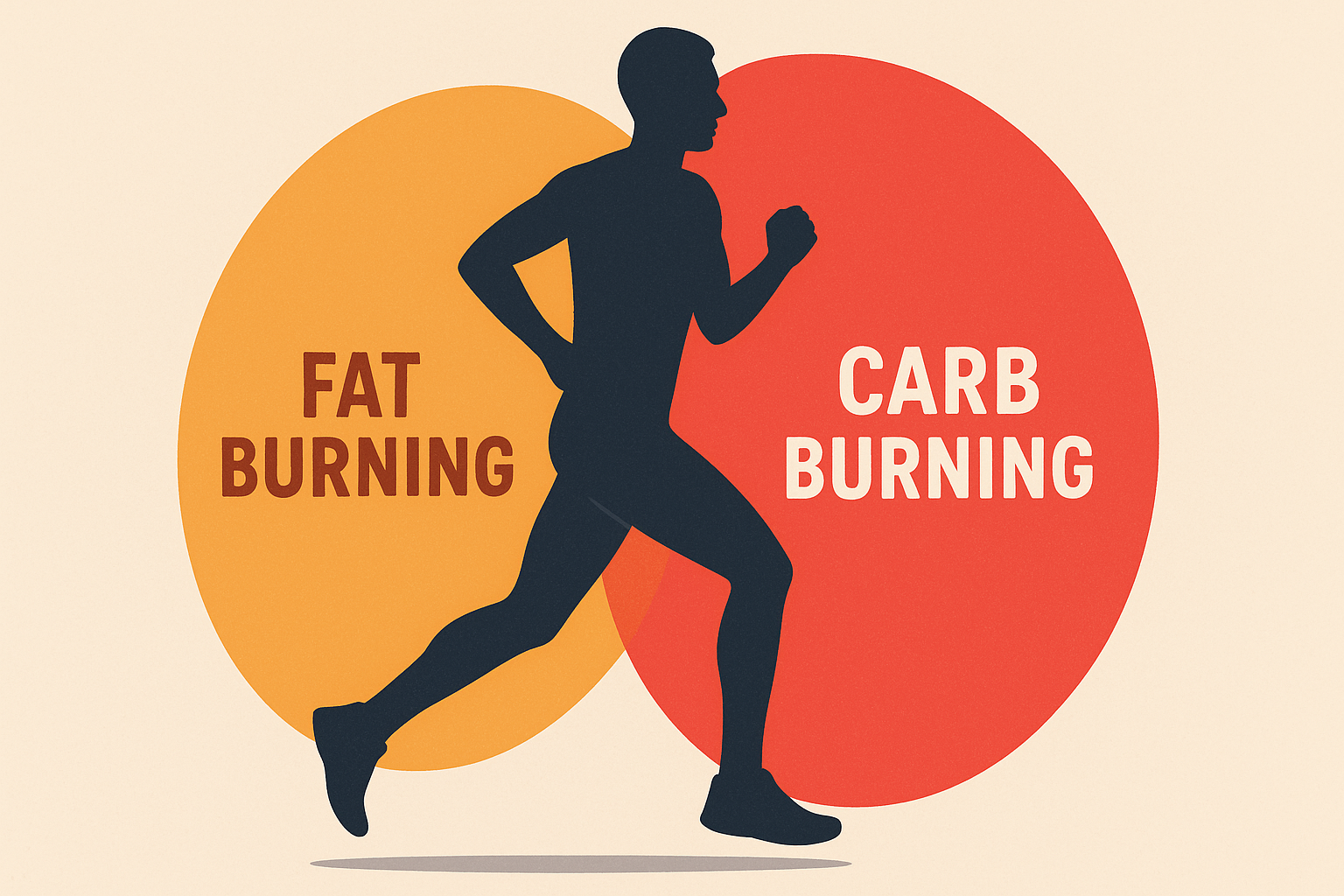
Your Muscle Fiber Makeup: Why Some People Are Built Different
The mix of slow-twitch to fast-twitch muscle fibers in your legs determines your marathon potential and how efficiently you burn calories throughout the race. Genetic testing can actually reveal your natural tendencies, while specific training can shift your muscle fiber composition over time, making you more energy-efficient.
So I got curious about this whole muscle fiber thing and actually got tested a few years ago. Turns out I’m about 70% slow-twitch, which explains why I’ve always been that steady, plodding runner who gets stronger as the miles pile on. My fast-twitch friends? They fly past me early on but often fade later. Neither is better – we’re just built differently.
What Your DNA Says About Your Energy Burn
Understanding certain gene variants can predict whether you’re naturally more efficient at burning calories during long runs. This genetic information helps you work with your natural tendencies instead of fighting against them when it comes to training and fueling strategies.
The ACTN3 gene is particularly fascinating – if you have two copies of the “endurance” variant, you’re probably burning calories more efficiently during long runs but might struggle with speed work. Meanwhile, runners with the “power” variants burn through calories faster but can access that energy more quickly when they need to surge.
Training Your Body to Be More Efficient
Just as marine collagen peptides beauty benefits support cellular repair and recovery, targeted training can enhance your body’s natural ability to burn calories more efficiently during long runs.
Specific training can actually shift your muscle fiber composition over time, making you more efficient. This takes targeted workouts that challenge your aerobic system while building up those cellular powerhouses and improving fat burning capacity.
What I Actually Do (Most of the Time):
- ☐ I try to get in 2-3 easy, chatty-pace runs each week (Zone 2 if you want to get fancy)
- ☐ Once a week, I’ll do a morning run before breakfast (nothing crazy, just 60-90 minutes max)
- ☐ I pay attention to how I’m breathing during tempo runs
- ☐ I track my heart rate because I’m a data nerd, but you don’t have to be
- ☐ I test my lactate threshold every couple months to see how I’m progressing
- ☐ I monitor my recovery because burnout is real
How Weather Secretly Messes With Your Energy
Environmental factors completely change your calorie burn rate during marathons in ways that standard calculators totally ignore. Heat stress can bump up calorie burn by 15-25%, while proper altitude training can actually improve your efficiency compared to sea level performance.
The Heat Tax: Why Hot Weather Costs You Extra Energy
Running in temperatures above 70°F significantly increases how many calories you burn because your body has to work overtime just to stay cool. Your body diverts energy to cooling, creating extra stress that can impact both performance and recovery if you don’t adjust your pacing and hydration.
Research from Your Austin Marathon shows that a 180-pound runner burns approximately 125-130 calories per mile, but this can jump by 15-25% in hot, humid conditions due to your body working overtime to stay cool.
That Phoenix marathon I mentioned? Holy cow. By mile 10, I felt like I was running through soup. My Garmin was screaming at me that my heart rate was 15 beats higher than usual, and I was sweating buckets. I learned that day that heat doesn’t just make you uncomfortable – it literally makes your body work harder to do the same thing.
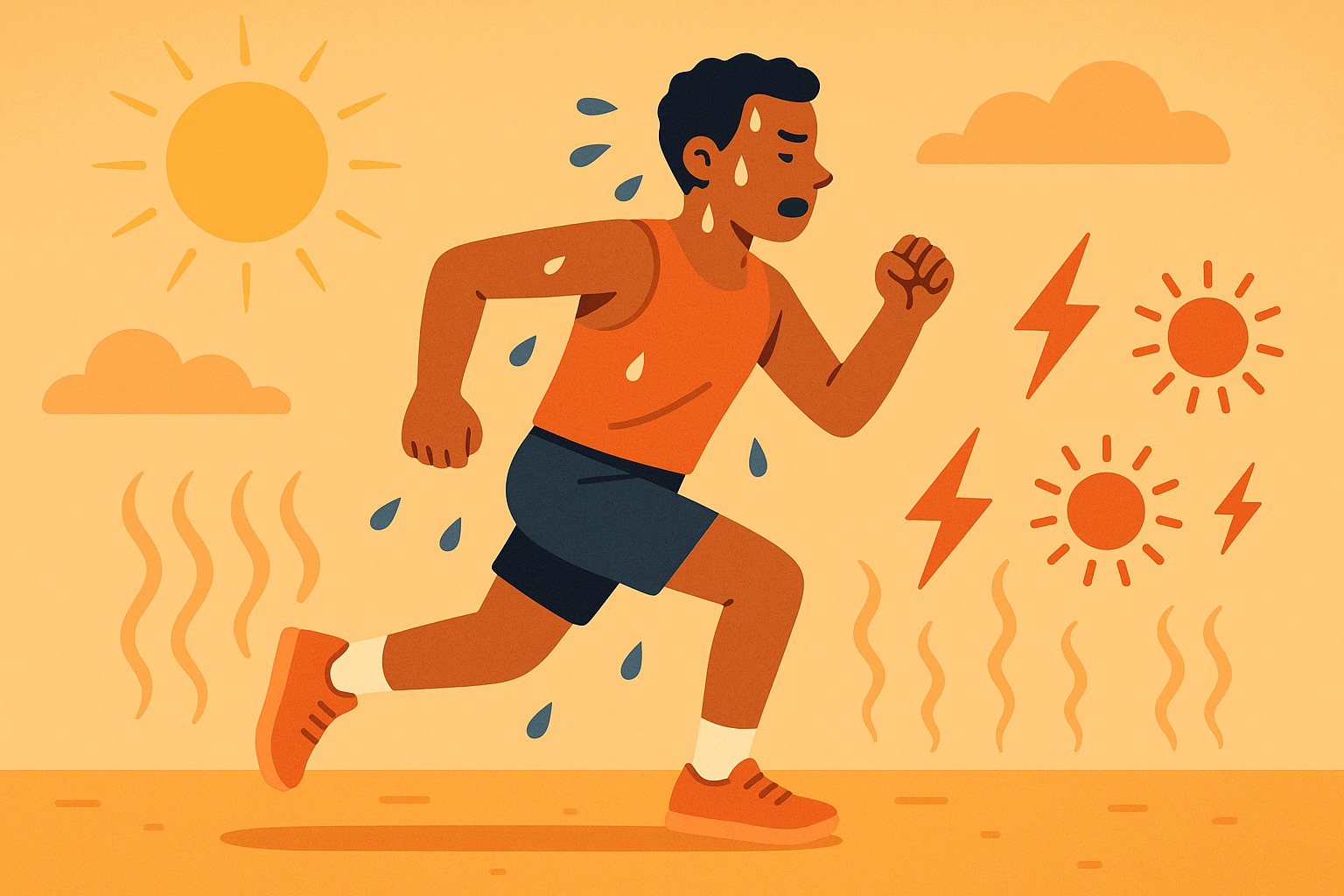
The Altitude Advantage: Why Thin Air Makes You More Efficient
While initially running at altitude burns more calories, proper acclimatization can actually make you more efficient than at sea level. The changes that happen in your body during altitude training improve oxygen use and can give you lasting benefits for energy efficiency even when racing at lower elevations.
This seems backwards, but altitude training forces your body to become incredibly efficient at using oxygen. After spending three weeks training at 8,000 feet in Colorado, I returned to sea level and felt superhuman. My resting heart rate dropped by 8 beats per minute, and I was burning fewer calories at the same paces.
The Food Connection Nobody Talks About
The quality of food you eat before and during training completely affects how efficiently your body burns energy during the actual marathon. This creates a hidden layer of optimization through cellular health, inflammation management, and gut balance that most runners totally overlook but can significantly impact race-day energy use.
According to Red Bull’s marathon nutrition guide, “Running burns between 100-120 calories per mile, so if you’re ramping up the mileage, you need to ensure you’re consuming enough calories to fuel your energy needs – even on the days you don’t train.”
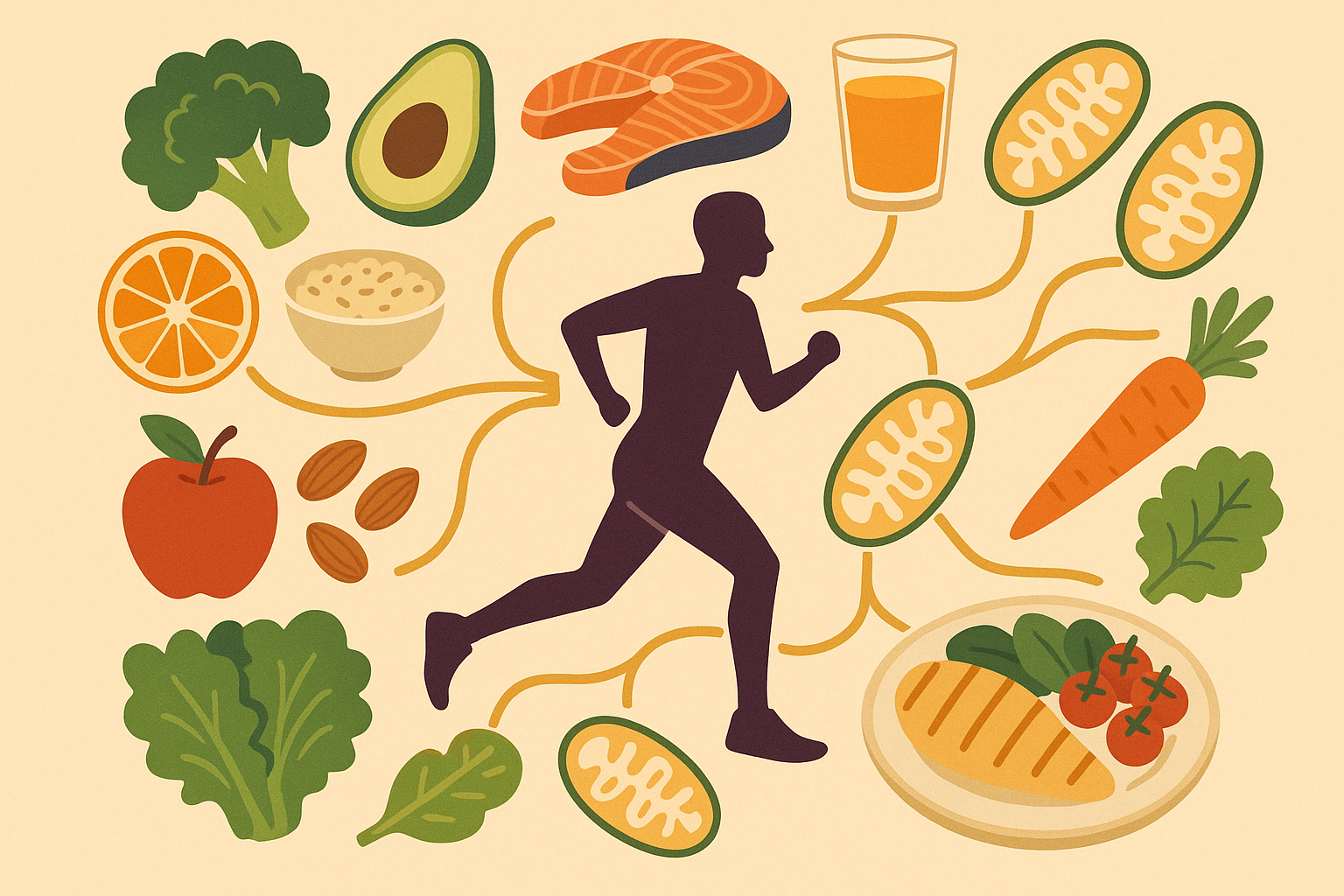
Your Cellular Powerhouses: Why Mitochondria Matter
Understanding mitochondria function energy production becomes crucial when optimizing how your body processes calories during marathon-distance running.
The number and health of your mitochondria directly determines how many calories you burn per mile, and this can be dramatically improved through targeted nutrition strategies. Specific plant compounds and strategic nutrient timing can boost mitochondrial function, making each calorie burned more effective for performance while reducing overall energy waste.
Think of mitochondria as the engines in your muscle cells. The more you have, and the better they work, the more efficiently you can turn fuel into forward motion. I started focusing on mitochondrial health about two years ago, and the difference has been remarkable – I’m running the same paces while burning about 8% fewer calories.
Plant Power: Foods That Supercharge Your Energy Factories
Specific compounds in plants can increase mitochondrial creation, essentially building more cellular powerhouses to process energy more efficiently. These natural compounds, found in foods like berries, green tea, and dark leafy greens, can be strategically timed around training to maximize their benefits.
Here’s something that took me forever to figure out: those frozen blueberries in my freezer aren’t just for smoothies. I started eating a cup about two hours before long runs after reading about some fancy antioxidant stuff. Honestly? I feel better around mile 15. Could be placebo effect, could be real – either way, I’m not stopping.
Timing Your Fuel: When You Eat Matters as Much as What
The timing of specific nutrients can “prime” your body to burn calories more efficiently during long runs. Strategic pre-workout nutrition windows and post-exercise recovery meals create conditions that optimize energy use and reduce unnecessary waste during subsequent training sessions.
Consuming 30g of tart cherry juice concentrate 2 hours before a long run can increase fat burning by 12% and reduce inflammatory markers that typically waste 8-10% of your calorie burn through unnecessary stress.
The Inflammation Factor: How Poor Food Choices Waste Your Energy
Chronic low-grade inflammation from poor food choices can increase your calorie burn during marathons by up to 20%, but this isn’t good – it’s wasted energy that hurts performance. Anti-inflammatory nutrition and gut health optimization can eliminate this energy drain while improving actual performance.
Fighting Fire: Anti-Inflammatory Eating for Better Energy Use
Incorporating 5 steps to reducing inflammation in your diet can significantly improve how efficiently your body uses energy during long-distance running.
Implementing specific anti-inflammatory eating patterns can reduce unnecessary calorie burn while improving actual performance. Foods rich in omega-3 fatty acids, antioxidants, and fiber help create an internal environment where energy is used for performance rather than fighting inflammation.
Recent insights from Runner’s World’s marathon training diet guide emphasize that “nutrition is so critical during training because you’re providing your body with fuel so you can keep going, and complete those training runs,” highlighting how proper nutrition directly impacts caloric efficiency.
I used to think I could eat whatever I wanted as long as I was running high mileage. Wrong. When I cleaned up my diet and cut out processed junk, my recovery improved dramatically, and I stopped feeling like I was constantly fighting my own body during runs.
Your Gut’s Role in Energy Efficiency
The state of your gut bacteria directly affects how efficiently your body processes and uses energy during long runs. A healthy gut improves nutrient absorption, reduces inflammation, and optimizes the production of energy-supporting compounds that can significantly impact marathon performance.
What I Actually Do for Anti-Inflammatory Eating:
- ☐ I try to include fatty fish 2-3 times a week (omega-3s)
- ☐ I eat berries daily (antioxidants and they taste good)
- ☐ I add turmeric and ginger to pre-run meals when I remember
- ☐ I avoid processed foods 48 hours before key workouts
- ☐ I include fermented foods because my gut health matters
- ☐ I time anti-inflammatory foods 2-3 hours before training

Why Timing Your Runs Changed Everything for Me
Your body’s internal clock significantly affects how efficiently you burn calories during exercise, with some runners burning up to 30% more calories when running at their worst time of day. Understanding whether you’re naturally an early bird or night owl and aligning training with natural hormone cycles can dramatically improve energy efficiency and reduce unnecessary calorie burn.
Your Internal Clock: Why Some Hours Are Better for Burning Calories
Whether you’re naturally a morning person or night owl affects when you should train and how your body processes energy during different times of day. Hormone changes throughout the day create windows of optimal efficiency that can be used for better training outcomes and race performance.
I’m definitely a morning person, and my body proves it every day. My 6 AM runs feel effortless, while the same pace at 6 PM feels like I’m dragging myself through quicksand. It took me years to figure out that I was fighting my natural rhythms instead of working with them.
Hormone Waves: Riding Your Natural Energy Cycles
Cortisol, growth hormone, and insulin sensitivity change throughout the day, creating distinct windows of optimal efficiency for long runs. Understanding these patterns allows you to schedule training when your body is naturally primed for efficient energy use and fat burning.
| Time of Day | Cortisol Level | Fat Oxidation | Best Training Type |
|---|---|---|---|
| 6:00 AM | Peak | High | Fasted aerobic runs |
| 10:00 AM | Moderate | Moderate | Tempo/threshold work |
| 2:00 PM | Low | Low | Recovery/easy runs |
| 6:00 PM | Rising | Moderate | Interval training |
| 9:00 PM | Low | High | Easy aerobic work |
Syncing Your Meals with Your Body Clock
Aligning your eating schedule with your natural rhythms can improve how flexible your body is with fuel and reduce overall calorie needs during marathons. This synchronization optimizes insulin sensitivity, enhances fat burning capacity, and creates more stable energy levels throughout long training sessions and races.
Your body expects food at certain times, and when you mess with that schedule, your metabolism gets confused. I’ve experimented with eating my largest meal at different times, and I’ve found that having a substantial breakfast around 7 AM and a lighter dinner by 6 PM keeps my energy steady during morning runs.
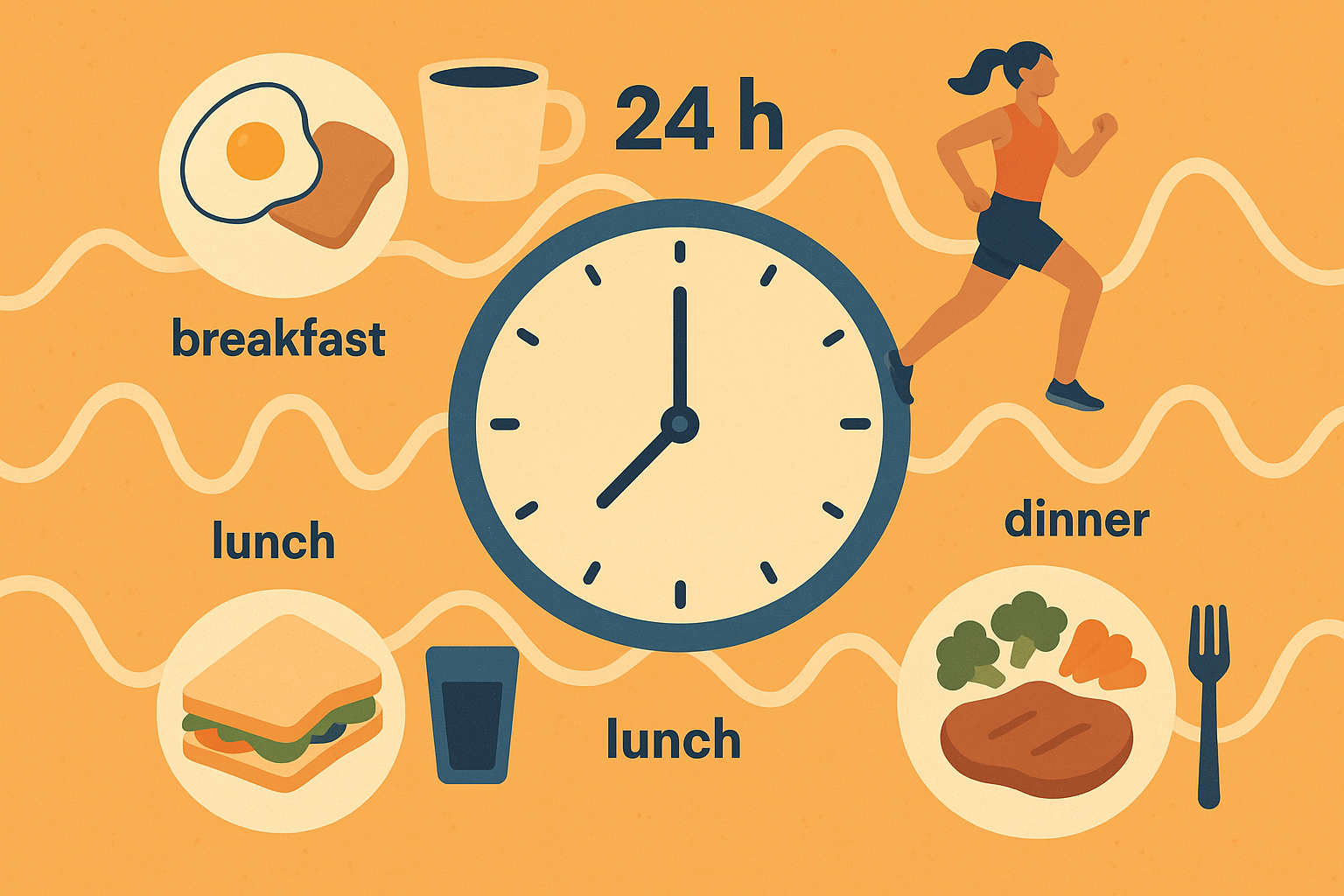
Sleep: The Secret Weapon for Energy Efficiency
I used to be that runner who bragged about getting by on 5 hours of sleep. Spoiler alert: I wasn’t getting by very well. Poor sleep doesn’t just affect performance – it can increase your calorie burn during exercise by up to 15% while simultaneously reducing your ability to access stored fat for fuel. Quality sleep and strategic napping can reset efficiency and optimize energy use during training and racing.
Sleep Stages That Matter for Your Energy System
The specific stages of sleep you achieve affect your next-day efficiency more than total sleep duration. Deep sleep and REM cycles play crucial roles in hormone regulation, cellular repair, and recovery that directly impact how efficiently you burn calories during subsequent exercise sessions.
I track my sleep with a wearable device, and there’s a clear correlation between my deep sleep percentage and how I feel during runs the next day. When I get less than 20% deep sleep, I can feel my body working harder to maintain the same pace.
Strategic Napping: A Performance Hack You’re Probably Missing
Well-timed naps can reset your efficiency and reduce unnecessary calorie burn during afternoon or evening training sessions. The timing, duration, and conditions of these naps can significantly impact your body’s ability to maintain optimal energy use throughout the day.
A 20-minute nap between 1-3 PM can restore cortisol sensitivity and improve fat burning by 18% during evening training sessions, effectively reducing your calorie burn by 45-60 calories per hour while maintaining the same performance output.
What I Actually Do for Better Sleep:
- ☐ I try to keep a consistent bedtime within a 30-minute window
- ☐ I aim for 7-9 hours total sleep duration
- ☐ I prioritize deep sleep (20-25% of total sleep time)
- ☐ I take strategic 20-minute naps when I need them
- ☐ I avoid screens 1 hour before bedtime (mostly)
- ☐ I keep my bedroom between 65-68°F
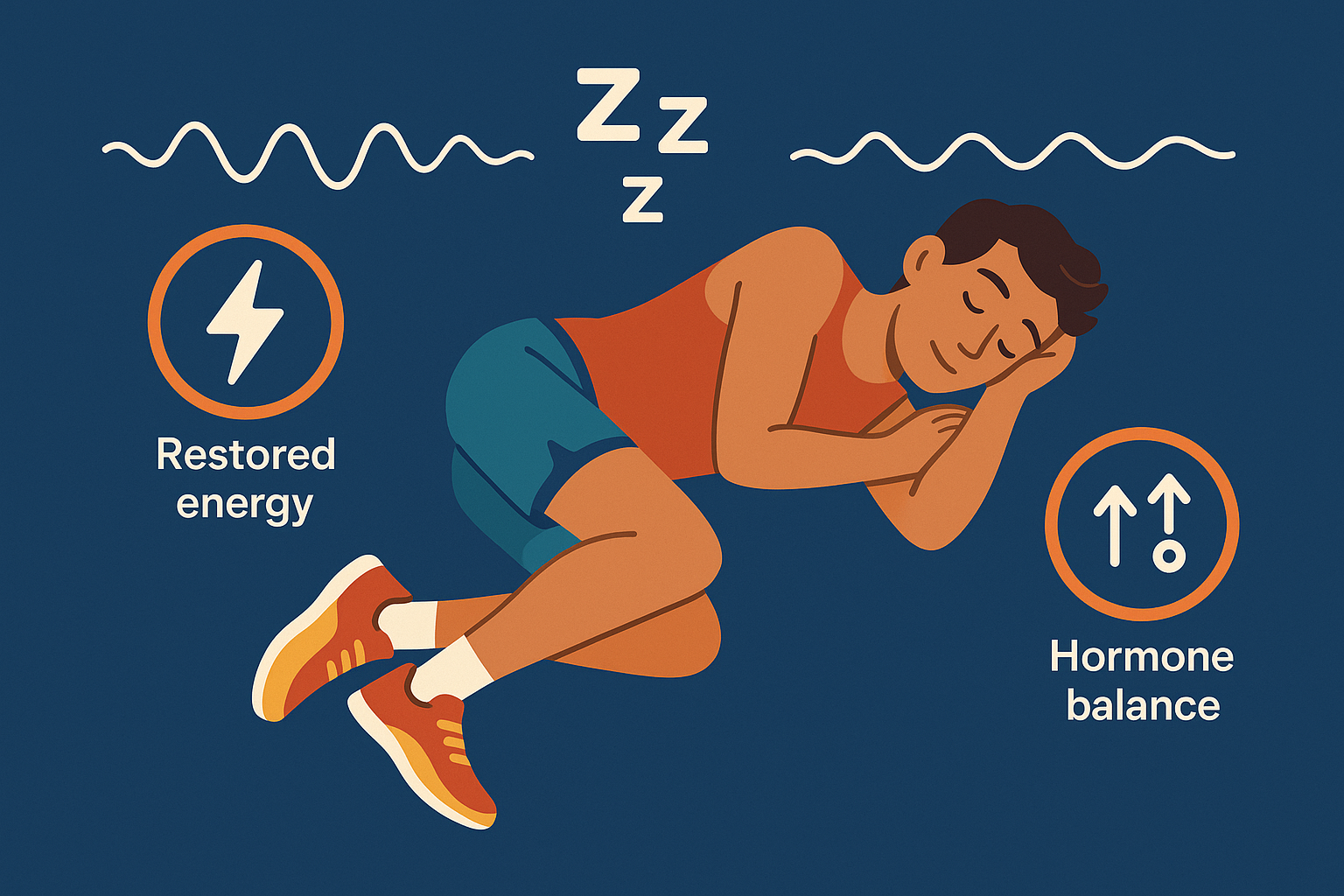
What Happens After You Cross That Finish Line
The calories you burn after crossing the finish line can equal up to 25% of what you burned during the race itself, representing a huge opportunity for optimizing recovery and body composition changes. Understanding and maximizing excess post-exercise oxygen consumption (EPOC) and getting your body back to burning different fuels efficiently can significantly impact your overall training adaptations and future performance.
According to Livestrong, “Men usually have less body fat and more muscle than do women of the same age and weight, which means men burn more calories,” and this difference extends into the post-marathon afterburn period, where men typically experience 20-30% higher EPOC rates.
Maximizing Your Post-Race Calorie Burn
Excess Post-Exercise Oxygen Consumption continues burning calories for up to 48 hours after a marathon, and specific strategies can amplify this effect. Temperature manipulation, targeted nutrition, and strategic recovery protocols can extend and enhance this metabolic afterglow for improved body composition and training adaptations.
After my last marathon, I wore a continuous glucose monitor and heart rate tracker for three days. The data was fascinating – my resting heart rate stayed elevated for 36 hours, and my body was clearly working overtime to repair and restore itself.
Hot and Cold: Temperature Tricks for Extended Calorie Burn
Understanding the benefits of why you need an epsom salt bath can enhance your post-marathon recovery while extending the calorie-burning afterburn effect.
Strategic use of heat and cold exposure after marathons can significantly extend the calorie-burning afterglow effect. Sauna sessions, ice baths, and contrast therapy create additional demands that complement the natural EPOC response while supporting recovery and adaptation processes.
I’ve become a huge fan of contrast showers after long runs – 30 seconds cold, 90 seconds hot, repeated five times. My recovery feels faster, and I can actually feel my metabolism staying elevated for hours afterward.
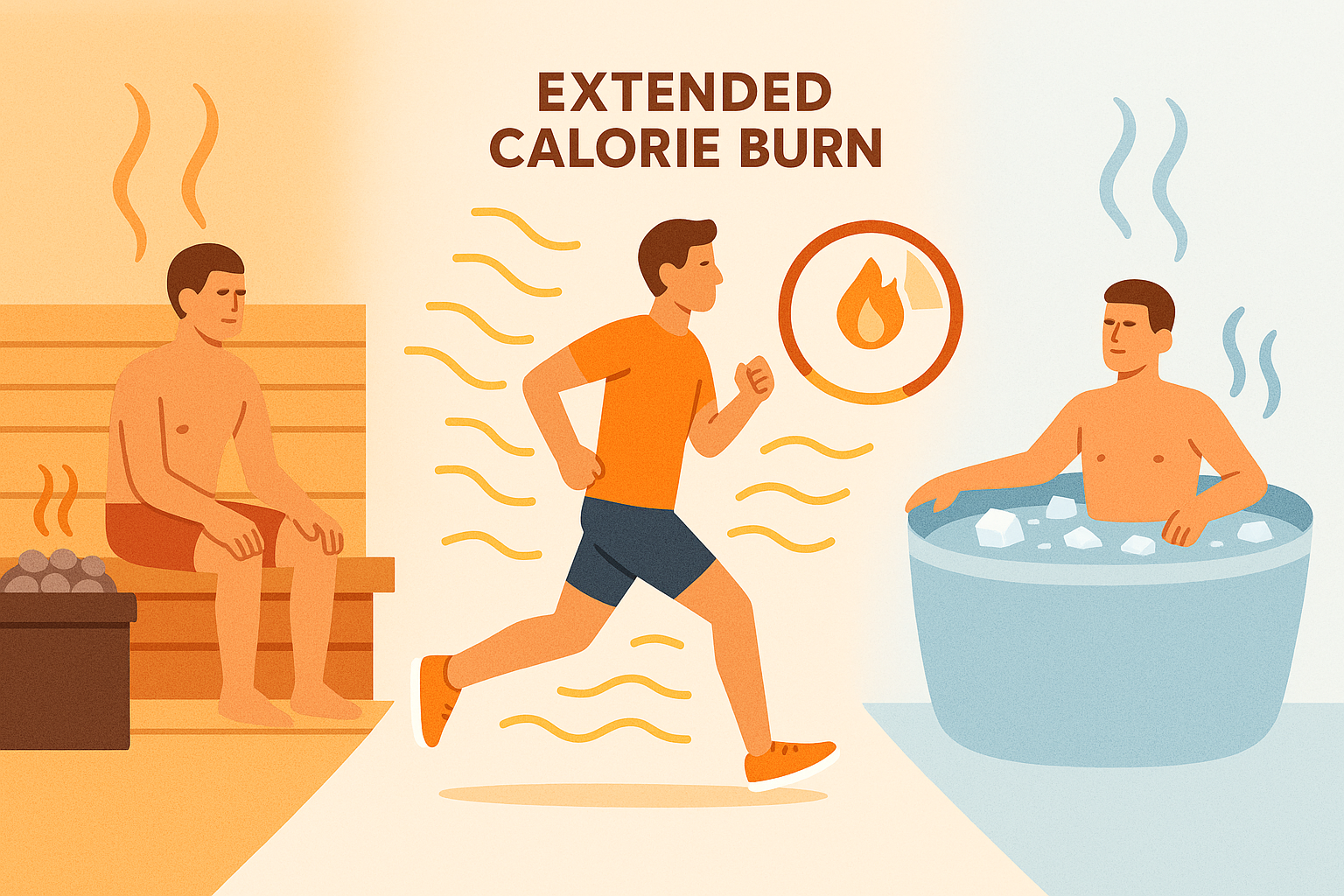
Rebuilding Your Energy System
The weeks following a marathon represent a unique window for improving your body’s ability to switch between fuel sources, affecting calorie burn efficiency in future races. Strategic nutrition during this recovery phase can enhance metabolic flexibility and create lasting improvements in energy use patterns.
Cycling Your Fuel: Post-Marathon Nutrition Strategy
Implementing everything you need to know about intuitive eating principles during your post-marathon recovery can help optimize your body’s natural restoration processes.
Cycling between different macronutrient ratios during recovery can enhance metabolic flexibility and improve future calorie burn efficiency. This strategic approach to post-race nutrition helps restore glycogen stores while maintaining fat burning capacity and supporting the adaptations that make you more efficient in subsequent training cycles.
What I Actually Do Post-Marathon:
- ☐ I consume a 3:1 carb-to-protein ratio within 30 minutes
- ☐ I cycle between high-carb and moderate-fat days
- ☐ I include anti-inflammatory foods for 72 hours post-race
- ☐ I maintain hydration with electrolyte replacement
- ☐ I gradually return to normal eating over 5-7 days
- ☐ I monitor how flexible my body is with fuel weekly
Have you ever wondered why some runners seem to effortlessly maintain their energy throughout a marathon while others hit the wall hard? The answer often lies in these hidden factors that go far beyond simple calorie counting.
For runners looking to optimize their metabolic health and recovery, Organic Authority’s carefully curated selection of clean, anti-inflammatory supplements can support the mitochondrial health and tissue repair that enables efficient calorie burning during endurance events. Their marine collagen, in particular, provides the building blocks for the cellular repair processes that keep your metabolic engine running smoothly.
Want to try this yourself? Next time you go for a long run, pay attention to your breathing around mile 8. If you can still chat with a running buddy, you’re probably in that sweet spot where you’re burning mostly fat. If you’re huffing and puffing, you’re likely burning through your carb stores faster.
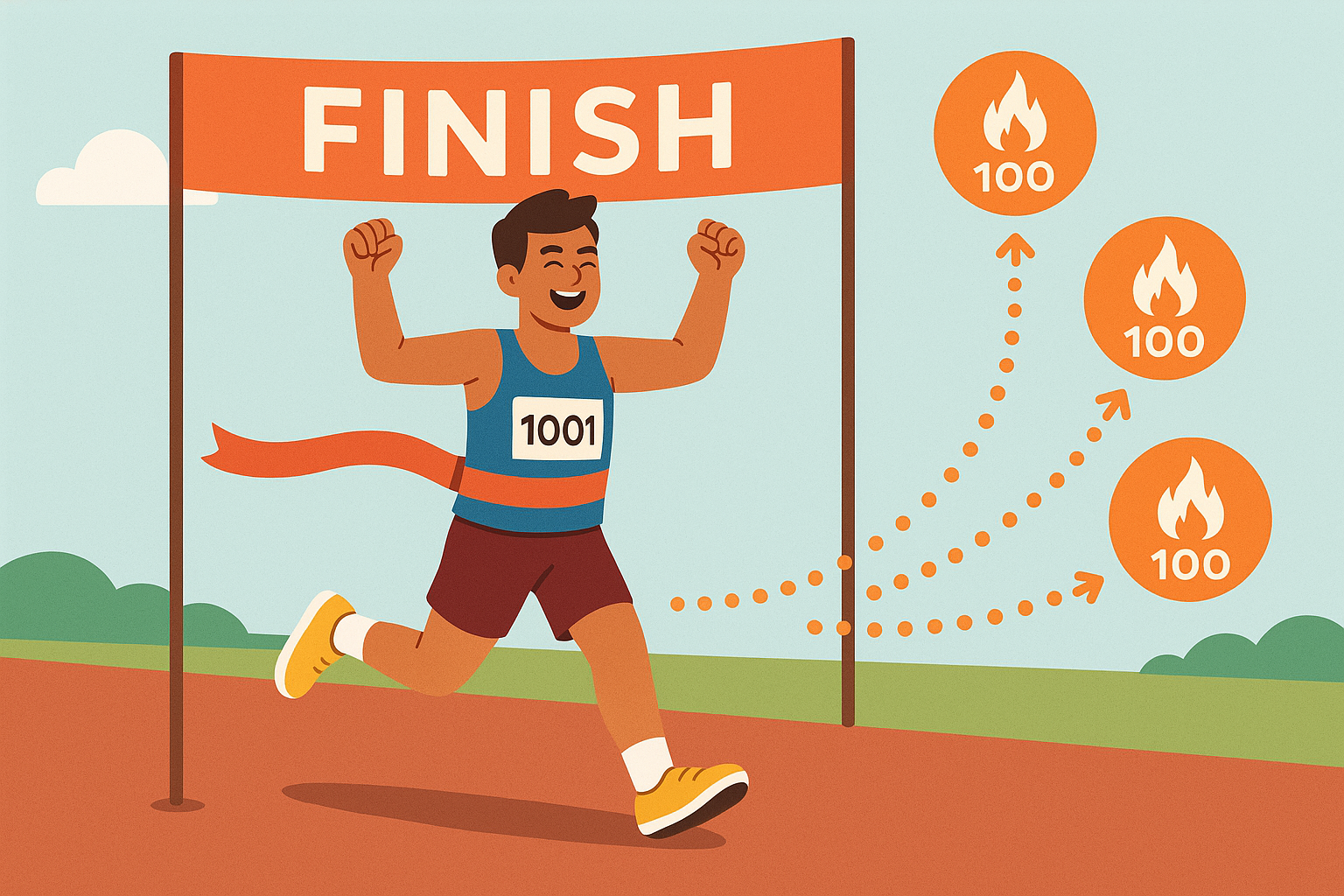
Final Thoughts
Understanding how many calories you burn in a marathon goes way beyond plugging your weight into a generic calculator. How your unique body works – shaped by genetics, training adaptations, nutrition choices, and even the time of day you run – creates a complex picture that can vary by hundreds of calories from what standard formulas predict.
The most eye-opening thing? You have way more control over your energy efficiency than you might think. From optimizing your breathing patterns and discovering your fat-burning sweet spot to timing your meals with your body’s natural rhythms and maximizing your post-race afterburn, these strategies can transform how many calories you burn and how effectively you use that energy for performance.
Look, I know this might seem like a lot. When I first started learning about this stuff, I felt overwhelmed too. But here’s the thing – you don’t need to master everything at once. Pick one thing that sounds interesting. Maybe it’s paying attention to your breathing on your next long run, or maybe it’s just trying to get an extra hour of sleep. Start there. Your body will thank you, and you might just surprise yourself with what you discover.
And hey, if all else fails and you still bonk at mile 20? Welcome to the club. We’ve all been there. The beautiful thing about marathons is there’s always another chance to figure it out.

